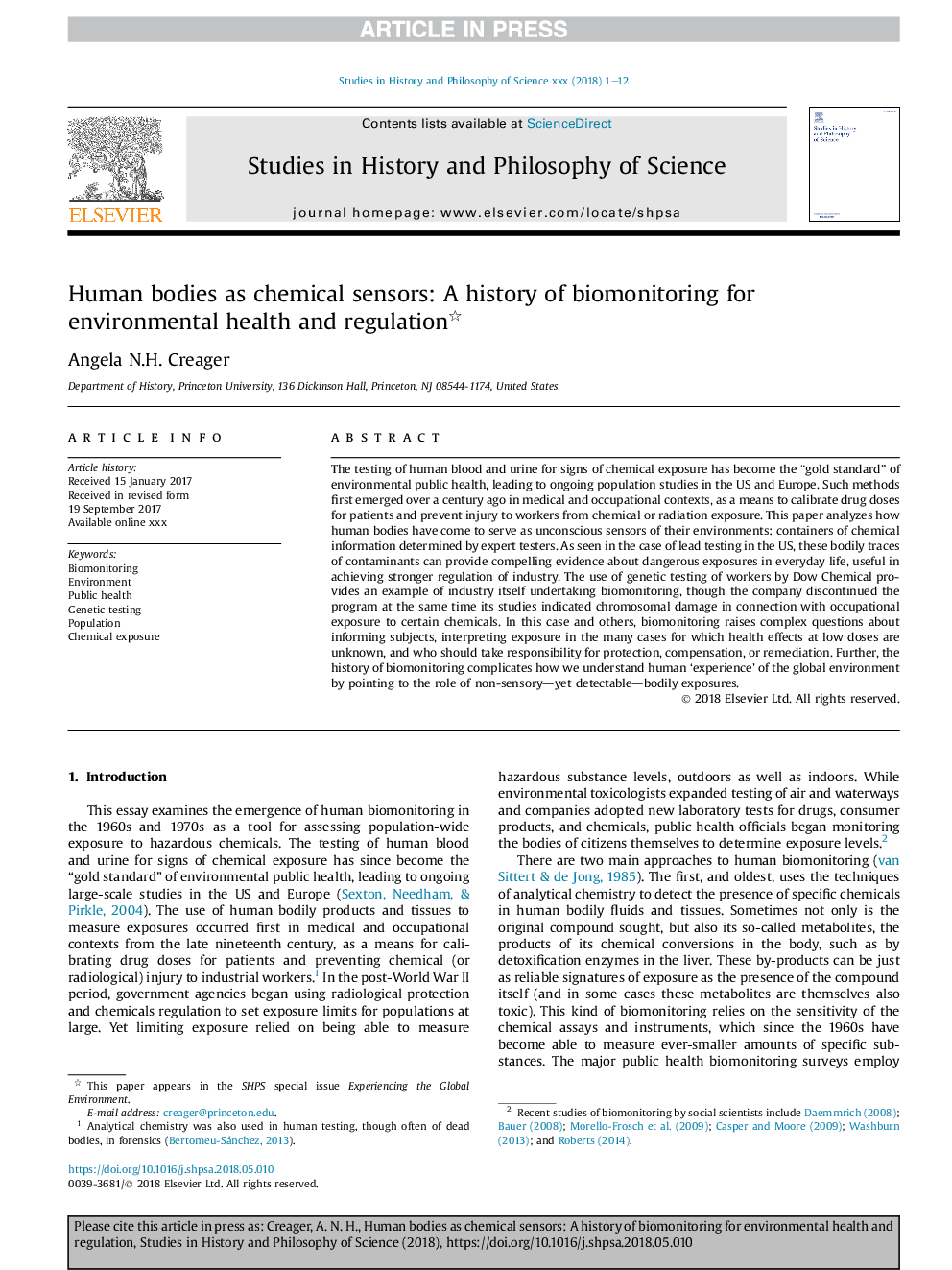| Article ID | Journal | Published Year | Pages | File Type |
|---|---|---|---|---|
| 8942603 | Studies in History and Philosophy of Science Part A | 2018 | 12 Pages |
Abstract
The testing of human blood and urine for signs of chemical exposure has become the “gold standard” of environmental public health, leading to ongoing population studies in the US and Europe. Such methods first emerged over a century ago in medical and occupational contexts, as a means to calibrate drug doses for patients and prevent injury to workers from chemical or radiation exposure. This paper analyzes how human bodies have come to serve as unconscious sensors of their environments: containers of chemical information determined by expert testers. As seen in the case of lead testing in the US, these bodily traces of contaminants can provide compelling evidence about dangerous exposures in everyday life, useful in achieving stronger regulation of industry. The use of genetic testing of workers by Dow Chemical provides an example of industry itself undertaking biomonitoring, though the company discontinued the program at the same time its studies indicated chromosomal damage in connection with occupational exposure to certain chemicals. In this case and others, biomonitoring raises complex questions about informing subjects, interpreting exposure in the many cases for which health effects at low doses are unknown, and who should take responsibility for protection, compensation, or remediation. Further, the history of biomonitoring complicates how we understand human 'experience' of the global environment by pointing to the role of non-sensory-yet detectable-bodily exposures.
Related Topics
Social Sciences and Humanities
Arts and Humanities
History
Authors
Angela N.H. Creager,
